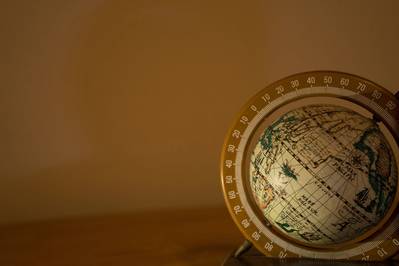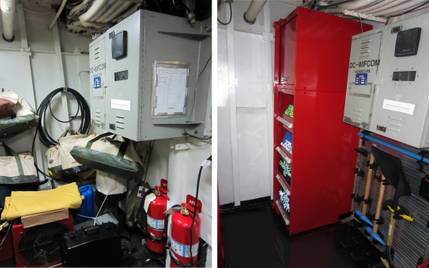ECDIS is Not a Replacement for Terrestrial Navigation
I guess it was only a matter of time.
After years of debating whether or not Celestial Navigation should be taught it is now time to debate the relevance of Terrestrial Navigation. The argument is same: why do I need to know this if there is technology available to do it for me?
The answer is also the same.
If you want to be a professional mariner than your knowledge base and skill sets should far exceed that of a weekend boater that follows the direction of their chart plotter around the bay.
In most nautical schoolhouses Terrestrial Navigation is almost always the first navigation course students receive. The reason for this is simple. Terrestrial Navigation is the foundation on which we build all other navigation courses. Terrestrial Navigation orients new mariners to the globe. It teaches us about angles, distance, time and the relationship between them. We learn how to compute and apply set and drift, compass error, gyro error, turn bearings and dead reckoning.
It’s where we learn about chart scales and the different types of chart projections. These are some of the most basic and essential building blocks required to produce a skilled Navigator. As such they should be reinforced at every opportunity, not simply written off as some outdated form of navigation.
At USMMA we incorporate the use of paper chart plotting into multiple courses. In addition to our Terrestrial Navigation and license seminar courses we incorporate plotting exercises in our ECDIS, RADAR, Bridge Watchstanding and Bridge Recourse Management courses. Our student will also complete chart plots as part of their sea projects. This constant reinforcement goes a long way in building that solid foundation. There is no way that a single course will provide a student with the skills or experience needed to pass a license exam or even more importantly function as an officer in charge of a navigation watch.
When I first started sailing with an ECDIS all I needed to learn was how to operate the machine. I had years of experience as a Navigator. The required tasks of fixing my position, laying out track lines and creating voyage plans were tasks I was already quite capable of performing.
Transferring those skills from one format to another was not very difficult. Today’s mariners don’t get the opportunity to gain that experience. They are taught Terrestrial Navigation but much of their time as cadets is spent working primarily with ECDIS. Whether you are on a ship or in a training environment Terrestrial fixes are looked at as a secondary position source. They are added to the ECDIS as a backup while the ship is in piloting waters but beyond that there are very few requirements or opportunities to gain any additional experience fixing your position. If we fail to develop our Terrestrial skills during our initial training process, there may be little opportunity to improve as we progress.
ECDIS gives the user the ability to display, or not display, a tremendous amount of information. Your capacity to properly groom the ECDIS so it displays the necessary information, in the correct format, will in a large part come from your understanding of Terrestrial Navigation. An electronic navigation chart is still a chart, you need to understand everything that chart contains no matter what the format.
Instead of using technology as the reason for eliminating core navigation skills we should use it to teach them more efficiently. Simulators for example have greatly increased our ability to teach chart plotting. A chart-plotting exercise on a simulator can be just as effective as an underway watch. Fixing your position on a moving vessel ingrains a sense of urgency that you can’t ever get from a paper plot exam. It forces the student to choose the navigation aids and land masses they think should be used to fix their position. The underway process is where most students begin to fully comprehend so many of the concepts they’ve recently learned. If you don’t understand something chances are you will avoid doing it all together. We should train our future navigators to understand the responsibility of fixing their position. That sense of responsibility can easily be replaced by complacency if we lack the experience of being actively engaged in the navigation process.
Being able to manipulate an ECDIS does not make you a skilled Navigator. Neither does passing a chart- plot exam that you’ve practiced a half dozen times and maybe even memorized the answers to. If we treat Terrestrial Navigation the same way the many view Celestial, like an outdated practice that has no real relevance in the modern world, then that is exactly how it will be perceived by current and future mariners. ECDIS should be considered the next step in Terrestrial Navigation, not its replacement.
About the Author
Captain John Ryan Holds an Unlimited Masters License. He has sailed on commercial, military and training vessels. He currently teaches Navigation and Collision Avoidance at the United States Merchant Marine Academy.
The views expressed in this paper are my own and do not necessarily represent the views of the U.S. Merchant Marine Academy, Maritime Administration, the U.S. Department of Transportation, or the United States.













